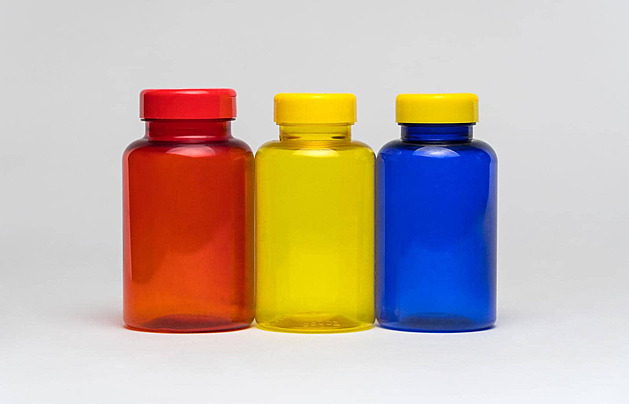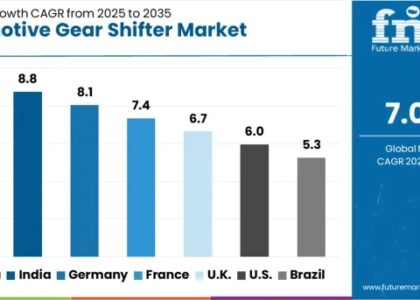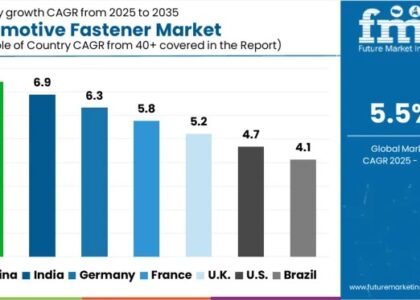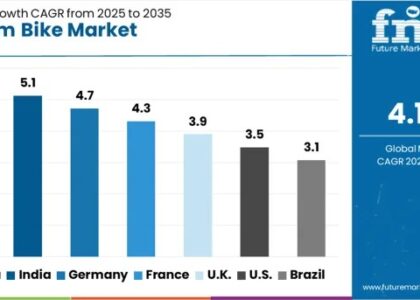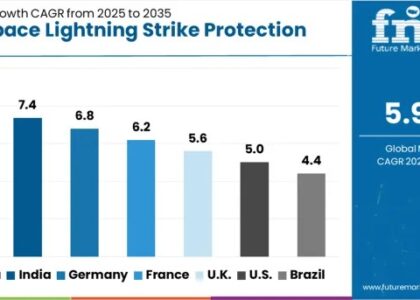Anticipated to exhibit substantial growth, the global plastic jar packaging market is forecasted to be worth US$ 27,051 million in 2023, with projections indicating a surge to US$ 35,309.19 million by 2033. The market is poised for a consistent rise, boasting an estimated 2.7% Compound Annual Growth Rate (CAGR). This growth trajectory is underpinned by the persistent demand for plastic jar packaging solutions, driven by factors such as convenience, durability, and versatility. As consumer preferences align with these qualities, the market is expected to navigate a steady course of expansion over the next decade, solidifying its significance in the packaging industry.
Plastic jar packaging industry is expected to register elevated demand for plastic jar packaging post the pandemic, as the need for safety has made plastic an essential item in chemical and biomedical applications.
The plastic jar packaging sector in North America, particularly in the United States, is poised for expansion, fueled by a growing preference for environmentally sustainable packaging solutions. Expected to capture a significant share of around US$ 5,976.9 million by the close of 2023, the region is projected to experience a growth rate of 2.5% during the forecast period, surpassing the historical rate of 2%.
Meanwhile, in Europe, with its well-established packaging industry, the plastic jar packaging market is anticipated to grow at an accelerated rate of 2.2% during the forecast period, driven by factors like the demand for convenience foods and the surge in e-commerce. Sustainability remains a prominent catalyst, with an increasing inclination towards eco-friendly container and packaging solutions. Nevertheless, regulatory constraints and environmental considerations may shape the market dynamics as governments introduce measures to reduce plastic waste and promote the adoption of environmentally responsible materials.
Request Sample: https://www.futuremarketinsights.com/reports/sample/rep-gb-3076
Sustainable Plastic Containers is a popular choice for a wide range of products, from food and beverages to personal care items and household goods. The market for plastic jar packaging is growing, driven by factors such as increasing demand for convenient and lightweight packaging, as well as advancements in technology that have made plastic jars more durable and eco-friendly.
One major trend driving the growth of the Sustainable Plastic Containers market is the increasing demand for convenient and lightweight packaging. Plastic jars are lightweight and easy to transport, making them a popular choice for manufacturers and consumers alike. They are also easy to open and close, making them convenient for on-the-go usage. This trend is particularly prevalent in the food and beverage industry, where plastic jars are commonly used to package products such as jams, sauces, and dips.
Another trend driving the growth of the Sustainable Plastic Containers market is the increasing focus on eco-friendly packaging. Plastic jars are now being made from recycled materials, making them more sustainable and environmentally-friendly. Additionally, many manufacturers are now using lighter-weight plastics, which use less energy to produce and reduce carbon emissions. This trend is becoming more and more important as consumers become more environmentally conscious and demand more sustainable options.
The advancements in technology are also playing a vital role in the growth of the plastic jar packaging market. New technologies like blow molding, injection molding, and thermoforming have made plastic jars more durable and resistant to impact, making them more suitable for packaging a wide range of products. Additionally, new packaging designs like tamper-evident closures and child-resistant closures have also made plastic jars more secure and safe.
Market Drivers:
- Growing Packaging Industry: The increasing demand for paper edge protectors is largely driven by the growth of the packaging industry. With rising e-commerce activities, industrialization, and urbanization, the need for efficient and sustainable packaging solutions has surged, thereby boosting the demand for paper edge protectors.
- Environmentally Friendly Packaging Solutions: Paper edge protectors are considered eco-friendly alternatives to traditional packaging materials like plastic. With growing awareness about environmental concerns and regulations promoting sustainable packaging practices, the demand for paper-based solutions has witnessed a significant uptick.
- Cost-Effectiveness: Paper edge protectors are often more cost-effective compared to alternatives like plastic or metal. This cost advantage makes them a preferred choice for manufacturers and retailers, especially in industries where margins are tight or cost efficiency is crucial.
- Customization and Versatility: Paper edge protectors can be easily customized to suit specific packaging requirements. They are available in various sizes, thicknesses, and designs, offering versatility to cater to different industries and applications. This customization capability enhances their appeal among businesses seeking tailored packaging solutions.
- Rise in International Trade: Globalization and the expansion of international trade have led to increased transportation and handling of goods. Paper edge protectors play a vital role in safeguarding products during transit, reducing the risk of damage and ensuring product integrity, which has become increasingly important in the context of global supply chains.
Market Restraints:
- Competition from Alternative Materials: Despite the growing popularity of paper edge protectors, they face competition from alternative materials such as plastic, foam, and metal. Each material offers distinct advantages and may be preferred in certain applications, posing a challenge to the widespread adoption of paper-based solutions.
- Limited Load-Bearing Capacity: While paper edge protectors provide adequate protection for many products, they may have limitations in terms of load-bearing capacity compared to materials like metal or plastic. This can restrict their use in industries requiring heavy-duty packaging or for products with specific handling requirements.
- Moisture and Durability Concerns: Paper-based packaging solutions are susceptible to moisture and environmental factors, which can compromise their structural integrity and protective properties. In applications where exposure to moisture or rough handling is common, concerns regarding durability may arise, potentially hindering the adoption of paper edge protectors.
- Perception of Strength and Rigidity: Despite advancements in paper engineering, there may still be a perception among some consumers and businesses that paper edge protectors are less sturdy or durable compared to alternative materials. Overcoming this perception and convincing stakeholders of the robustness and effectiveness of paper-based solutions remains a challenge for market players.
- Regulatory Compliance: Compliance with regulatory standards and certifications, particularly concerning the use of sustainable materials and packaging practices, can pose challenges for manufacturers and suppliers in the paper edge protectors market. Meeting stringent requirements while ensuring cost competitiveness and operational efficiency is essential but may require significant investments in technology and infrastructure.
Leading players operating in the plastic jar packaging market are
- Alpha Packaging Inc.,
- Ontario Plastic Container producers Ltd.,
- Cospak Pty Ltd.,
- Gepack Srl,
- Amcor Limited,
- Berry Global Inc.,
- Gerresheimer AG,
- Olcott Plastics, Inc.,
- RPC M&H Plastics Ltd.,
- All American Containers, Inc.,
- Tim Plastics, Inc.,
- Pretium Packaging, LLC,
- Integrity Cosmetic Container Industrial Co., Ltd.,
- Silgan Holdings Inc.,
- Taral Plastics, Inc.,
- SKS Bottle & Packaging, Inc.,
- Neville and More Ltd., Ltd.
- Plasmo Pty Ltd, Zenith Global Ltd,
- Thornton Plastics Co.,
- Rayuen Packaging Co., Limited.
Buy Now/Purchase: https://www.futuremarketinsights.com/checkout/3076
Key Segments-
By Material Type:
- Polyethylene Terephthalate (PET)
- Polyethylene (PE)
- Low-Density Polyethylene (LDPE)
- High-Density Polyethylene (HDPE)
- Polyvinyl Chloride (PVC)
- Polypropylene (PP)
- Polystyrene (PS)
- Others (polycarbonate, polylactide etc.)
By Capacity:
- Less than 10 Oz
- 11 – 30 Oz
- 31 – 60 Oz
- More than 61 Oz
By End Use:
- Food and Beverages
- Personal Care & Cosmetics
- Homecare
- Pharmaceuticals
- Chemicals
- Others
About Future Market Insights (FMI)
Future Market Insights, Inc. (ESOMAR certified, recipient of the Stevie Award, and a member of the Greater New York Chamber of Commerce) offers profound insights into the driving factors that are boosting demand in the market. FMI stands as the leading global provider of market intelligence, advisory services, consulting, and events for the Packaging, Food and Beverage, Consumer, Technology, Healthcare, Industrial, and Chemicals markets. With a vast team of over 5000 analysts worldwide, FMI provides global, regional, and local expertise on diverse domains and industry trends across more than 110 countries.
Contact Us:
Future Market Insights Inc.
Christiana Corporate, 200 Continental Drive,
Suite 401, Newark, Delaware – 19713, USA
T: +1-845-579-5705
For Sales Enquiries: sales@futuremarketinsights.com
Website: https://www.futuremarketinsights.com
LinkedIn| Twitter| Blogs | YouTube


